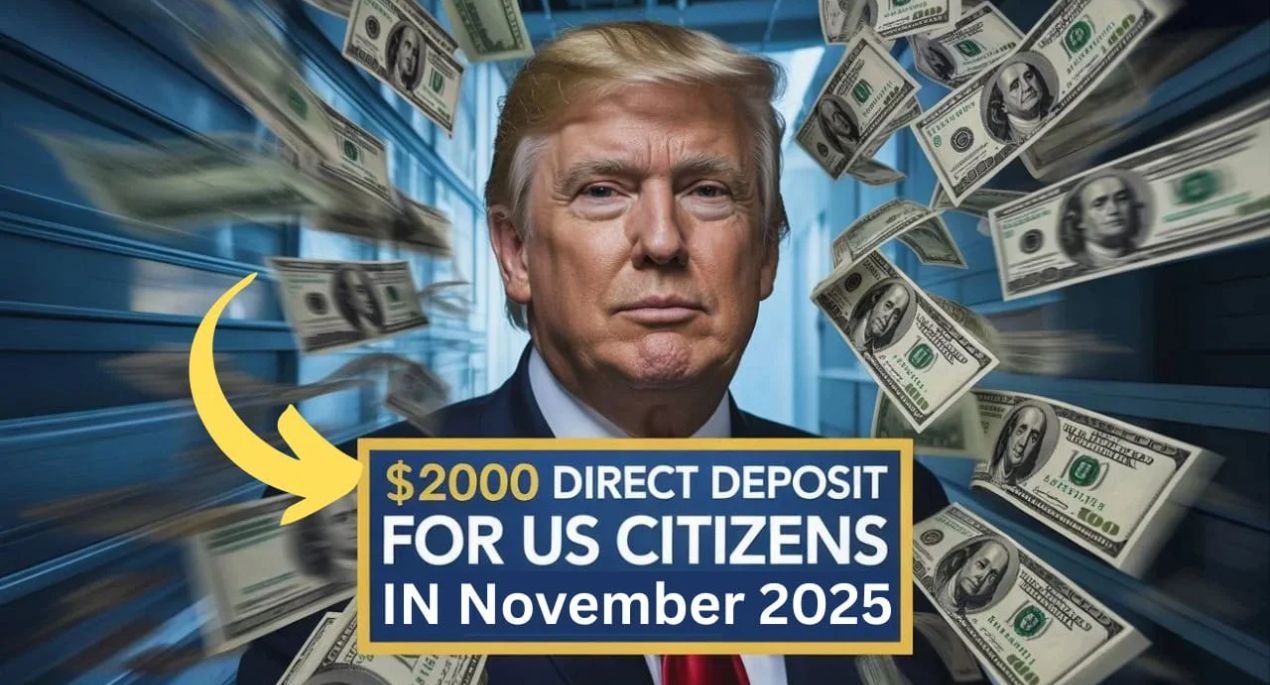$2,000 Direct Deposit : As the end of 2025 approaches, many Americans are hearing discussions about potential new federal financial relief. In response to ongoing economic pressures, there is speculation about a possible $2,000 direct deposit for eligible citizens in November. This article summarizes the current reports regarding eligibility, expected timelines, and the necessary steps individuals might need to take.
Understanding the Proposed Payment
The discussed $2,000 payment is part of a potential federal initiative designed to help citizens manage the cost of living. While not officially confirmed or labeled as a “stimulus check,” its goal would be to provide direct financial support to households. The Internal Revenue Service (IRS) would likely manage the distribution, sending funds via direct deposit or mail based on the information it has on file for taxpayers and federal benefit recipients.
Reported Eligibility Guidelines
Based on the framework of previous relief programs, eligibility for the potential $2,000 payment is expected to be based on income and beneficiary status. The following groups are anticipated to qualify if the payment is approved:
Single taxpayers with an adjusted gross income below $75,000 are expected to receive the full amount. For married couples filing taxes jointly, the income threshold for the full payment is projected to be $150,000. Heads of household would likely need an income under $112,500 to qualify fully.
It is also expected that recipients of Social Security (SSI/SSDI), veteran benefits, and other low-income individuals will be automatically eligible, even if they do not typically file a tax return. For those with incomes above these thresholds, the payment amount would likely be gradually reduced.
Projected Payment Schedule
Should the payment be approved, the distribution process is projected to begin in mid-to-late November 2025. The timeline for receiving funds would depend on the method of distribution.
The first wave of direct deposits could hit bank accounts between November 15 and November 25, 2025. For those receiving a paper check, the mailing process would likely start by the end of November. A limited number of recipients may receive their funds via an Economic Impact Payment (EIP) debit card, which could arrive in early December. It is important to note that these dates are estimates and could be affected by banking processes and official IRS scheduling.
How to Prepare and What to Expect
While no application is expected to be required, there are steps you can take to ensure your information is current for a smooth process.
The IRS will likely use your 2024 tax return or federal benefits information to determine your eligibility and payment method. Therefore, if you have not yet filed your 2024 taxes, doing so is highly recommended. You can also update your direct deposit information and mailing address using the IRS’s online tools, such as the “Get My Payment” portal, once it is activated for this program. Always be vigilant against scams; the IRS will not initiate contact via email, text, or social media to ask for personal or financial information.
The Purpose Behind the Potential Payment
The primary goal of this discussed payment is to provide stability to American households facing high costs for essentials like housing, food, and healthcare. For many families, a $2,000 direct deposit could offer crucial assistance with bills, rent, or medical expenses, particularly as the holiday season nears. This relief is seen as a measure to bolster financial security during a period of economic uncertainty.
Answers to Common Questions
1. Is the $2,000 direct deposit confirmed?
No, this payment has not been officially passed into law by Congress or confirmed by the federal government. The information is based on current discussions and proposals.
2. Will I need to apply to receive the payment?
It is expected that the vast majority of eligible individuals will not need to apply. The IRS will likely automate the process using tax and benefits data.
3. What if I didn’t file a tax return for 2024?
Recipients of federal benefits like Social Security or veteran pensions are expected to be enrolled automatically. Non-filers should monitor the official IRS website for specific guidance.
4. Could this payment affect my other government benefits?
No, this type of direct relief payment is not considered income and would not impact your eligibility for programs like SSI, SSDI, or SNAP.
5. How can I check the status of my payment if it is approved?
The IRS will likely reopen its “Get My Payment” online tool, allowing individuals to track their payment status and see whether it is being sent via direct deposit or mail.
